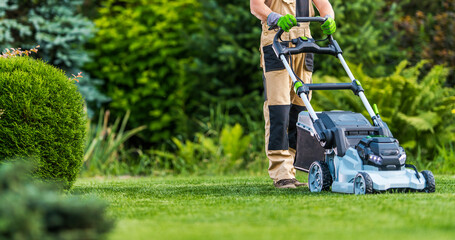A well-maintained landscape boosts curb appeal and increases property value. But a landscape needs special care in different seasons to thrive.
Offer seasonal Oahu Landscaping Services that meet your customers’ specific needs throughout the year. These tasks include debris and leaf cleanups, soil aeration, mulch refreshes, planting flowers and bulbs, and pruning.
Summer

Just because summer flowers have faded doesn’t mean your landscape is bare. In fact, fall is the best time to add structure and color with shrubs like evergreen cedar or juniper that provide greenery year-round. In addition, winter-interest shrubs such as red twig dogwood offer beautiful contrast against snowy landscapes.
It’s also a good idea to invest in hardscape services in the fall. Patios, walkways, retaining walls, and stonework require regular care to prevent damage caused by freeze-thaw cycles over the winter. Getting these services done in the fall will protect your investment and keep your property looking its best. This includes repairing cracks, re-leveling pavers, and weeding or clearing debris from surfaces. It’s also the perfect time to prepare for irrigation winterization on commercial properties in colder climates.
Fall
In the fall, upselling your mowing and regular landscaping services to high-demand, seasonal work keeps crews productive and clients happy. Leaf removal and cleanups are quick, high-margin jobs that practically sell themselves. Add aeration and overseeding to improve lawns and give them a good start for spring. These jobs deliver great profit per crew hour and help clients protect their landscape investment.
Winterizing sprinkler systems saves clients hundreds in repairs, helps avoid costly freeze damage, and sets them up for a smoother season ahead. Offer bundled packages and offer pre-booking of this service to lock in recurring revenue before the busy holiday season.
Keep in touch with past customers and see if any of your summer services are still needed this year. Using your CRM to identify potential opportunities, you can grow your business, increase client satisfaction, and boost revenue in the off-season. That way, if you do take a well-deserved break from the entrepreneur life, your landscape business is set up for success when you return. Lisa Marino is the Sr. Marketing Director at Service Autopilot, where she leverages 17+ years in direct marketing to push entrepreneurs beyond their limits. She enjoys growing client relationships through time-tested marketing techniques.
Winter
From plump porch pumpkins to a flurry of snow, the beautiful changing of the seasons brings a variety of new revenue opportunities for landscapers. Offering fall cleanups, leaf mulching and winter lawn prep helps protect gardens and perennials from freezing temperatures and heavy snowfall. Trimming and planting shrubs and trees also helps ensure healthy regrowth come spring. And for those who offer a commercial property landscaping service, prompt snow removal and holiday outdoor decorating can bring in new revenue during winter.
While bringing in new customers is always important, retaining existing clients is equally vital for seasonal businesses. A well-maintained landscape reduces the need for water and fertilizers, reducing maintenance costs, while preventing costly damage caused by overgrown roots or poor drainage. And, when it comes to commercial properties, a well-kept landscape can improve employee morale and overall workplace productivity by providing relaxing, scenic outdoor spaces for lunch breaks or work meetings.
Using the off-season to clean, maintain and stow equipment properly can help extend the life of landscaping tools and make them ready for peak season. Also, taking advantage of quiet weather to perform routine safety inspections and repairs can help ensure the safe operation of landscaping machinery and avoid expensive equipment replacements and downtime during busy times.
Offering high-margin services such as firewood sales is another way to keep revenue coming in during the off season. Many landscapers have access to a lot of cut logs collected from the summer, so why not turn them into a source of revenue? Additionally, it’s a good time to discuss extending or expanding landscape contracts into the fall with insurance brokers. Many standard policies only provide coverage during peak months, so a broker should be able to help landscapers find customized landscaping insurance that’s right for them.
